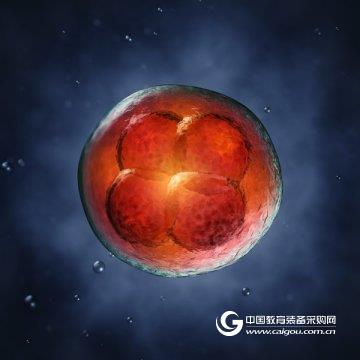
Nature discovers the earliest genetic mutations in the human body, revealing the mystery of the formation of the body!
March 24, 2017 - Researchers and their collaborators from Sanger researchers have discovered the earliest genetic mutations in the human body. By analyzing the adult cell genome, scientists can trace the way each embryo develops. The study, published in Nature, shows that human embryos are in a period of two cells, one of which becomes stronger and forms a larger part of the adult body.
A long-standing problem for researchers is what happened at the earliest stage of embryonic development, because it is almost impossible for scientists to directly study the process. The researchers now analyzed whole-genome sequencing in blood samples from 279 breast cancer patients and found 163 genetic mutations that occurred early in embryonic development in these individuals.
After identifying these gene mutations, the researchers used genetic mutations in the first, second, and third generation embryonic cells to calculate which parts of the body the two cells of the embryo formed, and found that the first two cells contributed differently to the body: One cell makes up 70% of the body and the other cell contributes only 30%. This difference in contribution to the body composition also exists in the second and third generation cells.
The researchers then looked for mutations in the patient's tumor tissue samples that were originally found in the normal blood cells of cancer patients because the cancer cells were developed from a mutant cell, so an embryonic mutation either exists in the tumor tissue or not. presence. In fact, the researchers were able to identify genetic mutations in the early stages of the embryonic tissue.
Young Seok Ju, the first author of the paper and a researcher from Sanger, said: “This is the first time researchers have been able to determine where genetic mutations come from early embryos. This is like finding a needle in a haystack. These mutations are compared to millions of genetic mutations. Only a small part of them, so we can look for them to track events that occur during embryonic development."
In this study, the researchers were also able to detect the rate of genetic mutations during early embryonic development, which is the first time in history. Previously, researchers estimated that each cell division would produce a mutation, but the researchers found that each cell division produced three genetic mutations. There are two ways of genetic mutations during embryonic development: the so-called mutation signals 1 and 5. These mutations are randomly distributed in the genome, and most of them do not affect embryo development. However, mutations that occur on important genes can cause diseases such as developmental disorders.
Sir Mike Stratton, the lead author of the paper and director of the Sanger Institute, said: "This is a very important step in using genome sequencing and mutations to broaden our understanding of biology. In fact, these mutations are archaeological remains in our adult tissues. Information, we can use this information to better understand human embryology. Of course, this is only our early understanding of human development, and we hope to learn more in the future."
Shanghai Chuangsai Technology has excellent performance, interleukin cytokines, fetal bovine serum, electrophoresis equipment scientific instruments, raw material drug standards, chemical reagents, cell culture consumables, Shanghai Chuangsai, mass products special promotions, welcome to inquire!
Dongguan Aoxing Audio Visual Equipment CO.,Ltd , https://www.aoxing.net